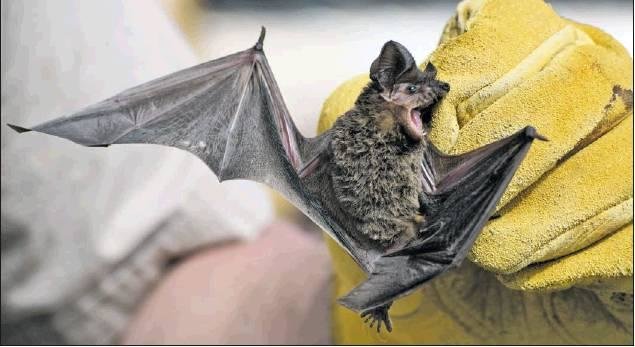Got a bat in the attic?
What to do when a bat is in your home
Special to the Chronicle
Halloween may be over, but you probably haven’t yet packed away your spider webs, skeletons or jacko-laterns.
Plastic bats serve as great decorations, but what …
This item is available in full to subscribers.
Subscribe to continue reading. Already a subscriber? Sign in
Get 50% of all subscriptions for a limited time. Subscribe today.
Please log in to continueNeed an account?
|
Got a bat in the attic?
What to do when a bat is in your home
Special to the Chronicle
Halloween may be over, but you probably haven’t yet packed away your spider webs, skeletons or jacko-laterns.
Plastic bats serve as great decorations, but what should you do if you find yourself with a live bat in your home? And no, we don’t mean your mother-in-law.
South Carolina is home to 14 different species of bat.
Those species form large groups and sometimes use human dwellings for roosting.
Most cases of unwanted bats in man-made structures are attributed to four common species: the free-tailed bat, big brown bat, evening bat and sometimes the tri-colored bat.
All the state’s bats feed on insects and are nocturnal. They’re able to navigate and locate prey using sound waves through the large gap between their front teeth. This allows them to emit high-pitched sounds out of their mouths at about 10-20 beeps per second. This gap also makes it impossible for bats to create holes in structures—only getting inside through preexisting crevices, gaps or holes.
If you find a bat in your home, it’s important that you don’t swat at it while it’s flying. If it lands within reach, put on thick gloves and cover it with a towel.
If the bat is on a curtain or wall, place a small box over the bat, then slide a piece of cardboard over the opening to trap the bat.
If you think you have been exposed to a bat, call SCDHEC immediately. Do not release the bat unless they direct you to do so.
According to the SCDHEC website, even if you haven’t been bitten by a bat, you are considered exposed to a bat if you:
• Wake up to a bat in your
room.
• Find a bat where children or pets have been
left unattended.
• A pet or person has
been in direct contact
with a bat.
If no one has been exposed, the bat can be released outside on a tree or other high object.
Try to find out where it got in and make sure there are no other animals like raccoons or squirrels inside.
Bats are an integral part of our ecosystem and economy. Less than 1% of natural bat populations were found to carry the rabies virus, according to a Canadian study.
Bats eat mosquitoes, forest and crop pests, and save the South Carolina agricultural industry an average of $115 million every year. They are also fascinating: the Brazilian free-tailed bat is the fastest flying animal on the planet at 100 mph.
If you’re not comfortable removing the bat from your home, you can hire a Wildlife Control Operator to remove the bat.
Other items that may interest you










Comments
No comments on this item Please log in to comment by clicking here